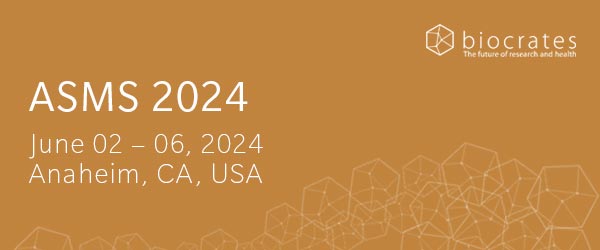About to embark on your first metabolomics research project? Here are 7 questions to consider before getting started, to make your project a success.
Metabolomics has attracted growing interest in recent years, and biocrates is proud to have played a role in helping bring this exciting technology into the limelight. If you’re new to metabolomics, there are a number of big decisions to consider that could determine the success of your research.
In this article, we will discuss 7 key questions that need to be answered prior to setting off on your metabolomics journey, and show you how some of our customers answered them. Remember: you don’t have to develop your research plan alone: let us know what you are working on and we will be happy to help and make your metabolomics project a success.
1. What is your hypothesis, and how can it be answered by metabolomics?
To find the best pathway for your project, review your initial assumptions about how to tackle the research question, using published literature and your own research. Existing findings on relevant underlying pathophysiology may reveal alternative metabolomics approaches to consider.
Enzo is investigating an autoimmune indication. Since little is known about the pathology of this disease, he saw metabolomics as a novel way to learn more. Being a newcomer to the field, he wasn’t sure what results to expect. For that reason, he went for an entirely hypothesis-free approach.
Unfortunately, that led to inconclusive findings in his initial project. He missed the opportunity to consider transcriptome data from a related project, which pointed to a role of FGF-19 and other proteins involved in the metabolism of bile acids, a group of metabolites that can easily be analyzed with a targeted metabolomics approach.
This might have been a better fit for the project, and a subsequent project confirmed bile acid metabolism as a key driver of said autoimmune disease.
2. How much risk are you willing to take?
Because of the ‘positive publication bias’, whereby positive results are more likely to be published than negative results, many researchers shy away from pursuing originality, which feels risky. But originality can lead to important scientific breakthroughs, and actually increase the chance of publication in higher impact journals.
Researchers therefore face the challenge of deciding how much risk they want to take, and to design their projects in a way that provides originality AND reasonable hope of a successful result. Could metabolomics be the answer?
Raphaela is a basic cancer researcher. Despite having what she considers a very good hypothesis, her funding proposal was rejected on the basis of an overly simple hypothesis and lack of preliminary data. Raphaela believes the reviewer could just as easily argued for insufficient originality, since her proposal was based on analyzing tryptophan with a routine clinical chemistry method.
She agrees to resubmit with a more comprehensive analysis of tryptophan metabolites (tryptophan and tryptophan catabolites from various pathways). This approach will increase the required budget and may be considered riskier than using the routine laboratory method.
Nonetheless, Raphaela considers it worthwhile as this approach allows her to discuss the relevance of the whole pathway in much more detail. She thinks that this will increase the perceived originality of the project, and thus increase the probability of a positive funding decision with the next submission.
3. What’s your timeline?
The timeline of your project can have a major impact on the approach you choose. If your metabolite analysis is designed to validate data as part of a publication review process, your needs are completely different from when you are planning a prospective study, for example.
In Christian’s current project, his research question revolves around amino acid metabolism. He could choose from a variety of industrial and academic partners to undertake measurement. As he believes a competitive working group is tackling the same question, he wants to be able to publish quickly, and needs a partner that can facilitate this.
At the same time, Christian is about to finish sample collection for a major clinical trial. In that study, he wants to measure a larger metabolite panel. Funding is limited and the timeline is less critical.
A number of potential partnering laboratories tell Christian they cannot provide short-term capacity. Consequently, Christian opts to run the samples for the initial project with a limited range of metabolites at biocrates’ laboratories, where a turnaround time within Christian’s expectations can be guaranteed.
biocrates recommends an academic core facility to run a more comprehensive metabolome analysis for the prospective study. The laboratory has experience in a similar research field and a track record for delivering high-quality results, as evidenced by numerous high-impact publications and successful ring trial participation.
The data from the initial project results in publication within a short time frame in the leading journal of the field. The results also prove essential for obtaining funding for the prospective study for which samples are analyzed at the suggested academic partner laboratory.
4. Have you chosen the right partners for the project?
As Christian discovered, partners can make or break a project. Before entering into a collaboration, researchers should consider the following:
- Does the partner have a good scientific reputation in this field of research?
- Could a partnership be a way to foster collaboration rather than competition with a research group in this area?
- Does the partner have a reputation of providing timely, high quality results?
- Does the partner provide expertise that fills the gaps in my experience?
The -omics core facility in Sarah’s institution is very experienced in diabetes research, but not in her field of research, which is neurodegeneration.
Unless she thinks that the diabetes expertise could provide an interesting perspective, it would make more sense for her to work with a distant partner with experience in neuroscience, rather than the convenient local choice.
After discussion, Sarah decides the samples should best be analyzed locally but opts to add a partner for data analysis and biological interpretation, who is experienced in -omics studies in neurodegenerative diseases.

5. Is the project feasible?
Designing a project that’s truly fit for purpose can be challenging, but get it wrong and you risk producing waste rather than meaningful data. Good project partners can be instrumental in designing projects in a way that avoids expensive, time-consuming mistakes.
Walter has spent the last four years collecting serum samples from patients with advanced melanoma. As there is no centralized biobank, samples have been stored in the department’s -20°C freezer.
Considering the growing body of knowledge about the role of altered energy metabolism in carcinogenesis, Walter intends to investigate metabolites from glycolysis, TCA cycle and pentose phosphate pathway in the collected samples.
While it is an interesting research topic, it’s not feasible to get information about the underlying pathology in this setting. This group of metabolites is mostly intracellular metabolites, of which the origin in a circulatory sample would be unclear. Furthermore, these substances are metabolized very quickly.
As serum samples need a considerable amount of time to be generated, and blood cells are metabolically highly active during coagulation, serum is not a suitable matrix to assess the energy homeostatic status of an organism. Finally, long term storage of samples at -20°C is not suitable for the analysis of many metabolites.
Walter decides to use the samples for a different purpose than metabolomics and make sure that future samples are collected and stored in a suitable manner for metabolomics. Walter decides to rely on amino acids and acylcarnitines for the assessment of energy homeostasis.
6. Which are the technology requirements?
Choosing the right technology is essential. Your analyte(s) of interest could be measured with a dozen different methods. Which one you select will be different depending on whether you want to create preliminary data in your new basic research project or look for a clinically applicable biomarker (for example).
Fabienne is looking for a novel biomarker in a gynecological disease. While she wants to measure as broad an analyte panel as possible, a couple factors shape her choice of approach.
Clinical applicability is key, so she is only interested in quantitative results. Also, the validation cohort from an international partner will only be available 12-18 months after the finalization of her own sub-cohort.
As Fabienne wants to create the discovery cohort data as soon as possible, she needs an approach that’s sufficiently reproducible to ensure her project is not jeopardized by analytical variability.
Finally, Fabienne is determined to bring the identified biomarker signature into clinical diagnostic use at her institution, so the method of choice should be compatible with the technology available in the local clinical diagnostics laboratory.
Fabienne decides to run a targeted profiling analysis at the local laboratory for both the discovery and validation cohorts, in order to maximize the potential of transfer into routine application.
7. What resources are available (and do you know where to obtain more?)
Great research requires resources, both monetary and personal. You have tough decisions to make to get maximum benefit from the available resources. Do you know what you really need, and where to get it?
Stephen wants to investigate the metabolic processes involved in angiogenesis. As the metabolites in some of the metabolic pathways involved in regulating angiogenesis are unstable, covering these would be quite complex, both from an experimental and an analytical perspective. Required financial resources for such a project are not available in the short term.
Stephen works with biocrates to define a metabolomics project that includes metabolites that are related to those initially identified as interesting, but that can be measured more easily, more quickly, and with 70% less budget. As a result, the project can provide preliminary data as well as methodological insights that could be used for future funding proposals.
Do you agree with our customers’ decisions? Has this article helped you in identifying the critical steps in planning your project? What additional questions do you consider when designing a project? Let us know.



